Autonomic Applications
The autonomic applications of biofeedback are diverse. They range from joint disorders to preeclampsia, functional gastrointestinal disorders (Functional Abdominal Pain and irritable bowel syndrome), diabetes (glycemic control, intermittent claudication, and foot lesions), hyperhidrosis, immune function, and motion sickness. Graphic © sumroeng chinnapan/Shutterstock.com.
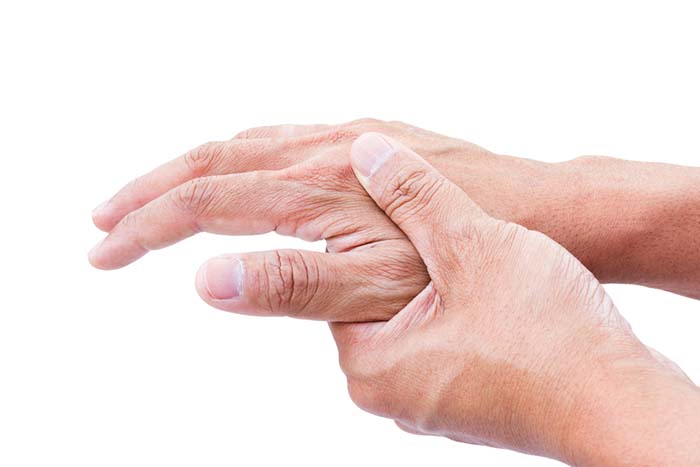
Clinicians have successfully treated these conditions by combining EMG, heart rate variability, skin electrical activity, and temperature biofeedback with relaxation training. This approach is termed biofeedback-assisted relaxation training (BART).
BCIA Blueprint Coverage
This unit addresses the Pathophysiology, biofeedback modalities, and treatment protocols for specific ANS biofeedback applications (IV-D).

This unit covers Joint Disorders, Preeclampsia, Functional Abdominal Pain, Irritable Bowel Syndrome, Glycemic Control, Intermittent Claudication, Foot Ulcers, Hyperhidrosis, Immune Function, and Motion Sickness.
Please click on the podcast icon below to hear a full-length lecture.

EVIDENCE-BASED PRACTICE (4TH ED.)
We have updated the efficacy ratings for clinical applications covered in AAPB's Evidence-Based Practice in Biofeedback and Neurofeedback (4th ed.).
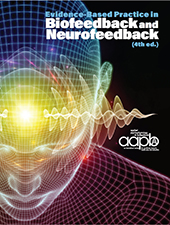
Below is a BioTrace+ /NeXus-10 screen that displays several modalities that could be used to treat autonomic disorders like arthritis.
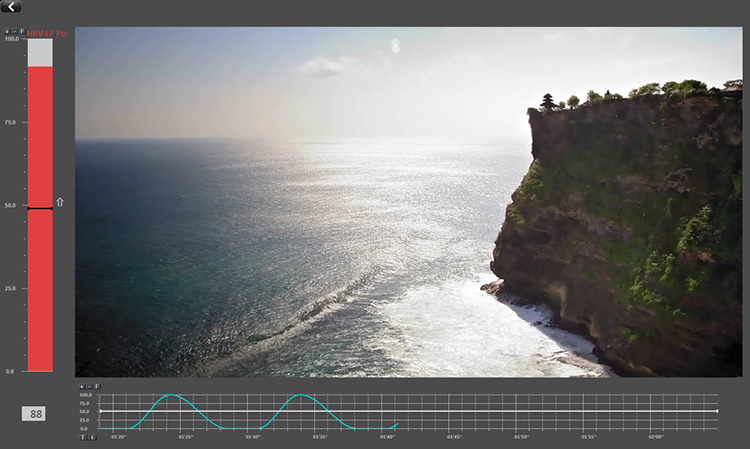
Joint Disorders
The American College of Rheumatology divides joint disorders into noninflammatory and noninflammatory joint diseases. Graphic © Lightspring/Shutterstock.com.

Common age-related osteoarthritis (OA) involves articular cartilage damage and loss. Inflammatory joint disease, termed arthritis, features infectious or noninfectious inflammatory attacks on joint lining and cartilage. This causes painful joint swelling and stiffness, thickening of the synovial membrane, and systemic inflammation signs (e.g., fever and malaise). Rheumatoid arthritis (RA) is a chronic noninfectious autoimmune disorder characterized by synovial joint swelling and pain due to progressive damage and destruction (Huether et al., 2020). Graphics © Designua/Shutterstock.com.
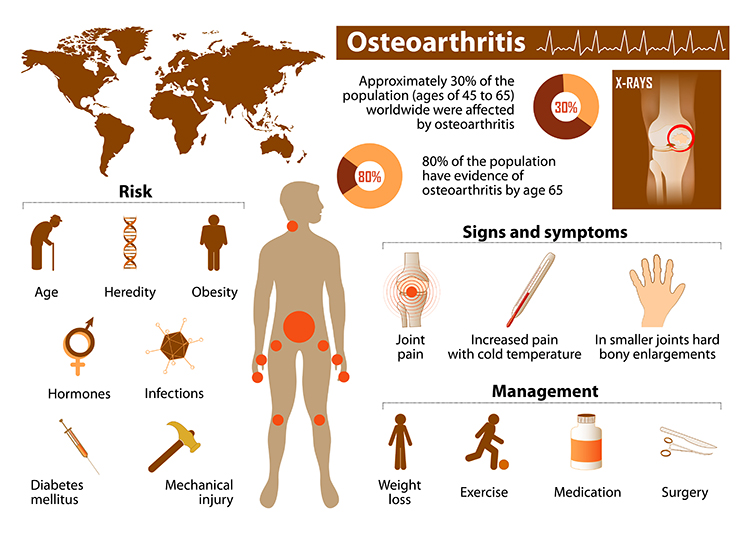
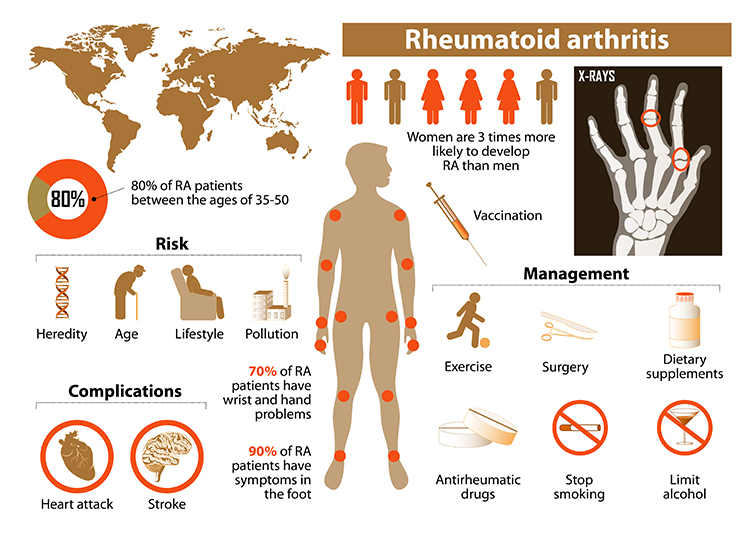
Graphic © Olga Bolbot/Shutterstock.com.

Demographics
Men and women share comparable rates of OA before age 50. Hhowever, the rates are higher in women afterward. OA is more likely in athletes and obese individuals who stress their weight-bearing joints. Obesity is an independent risk factor for OA that affects the knee joint (Huether et al., 2020).The prevalence of RA in the United States is about 1%, and the male-to-female ratio is 1 to 3. While RA can occur at any age, the age of onset is usually between 25 and 50, and prevalence peaks between 35 and 50 years (Temprano, 2014). Juvenile rheumatoid arthritis (JRA) appears before age 16 and persists longer than 6 weeks. About 300,000 children in the United States may be diagnosed with arthritis (Sherry, 2014). Graphic © Masycheva/Shutterstock.com.
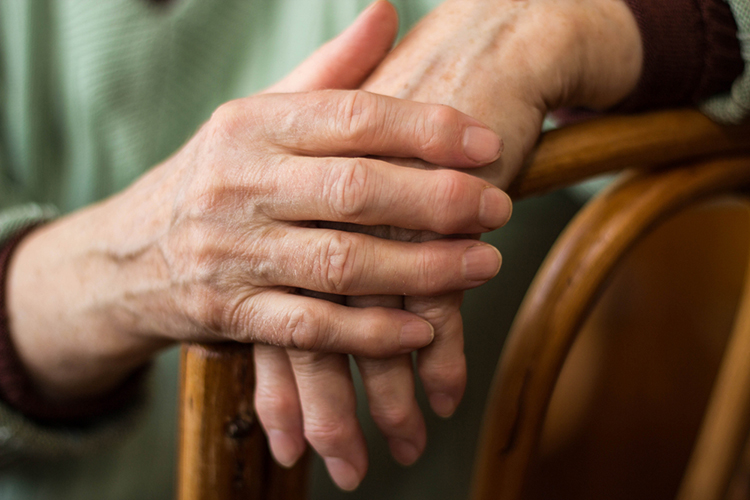
Biofeedback Studies
Clinicians have used temperature and SEMG biofeedback to successfully treat arthritis.
Temperature biofeedback may increase clearance of inflammatory cytokines (IL6, IL8, and GM-CSF), prostaglandins, and protease enzymes, reducing arthritis pain. Click on the Read More button for a brief research overview.
Flor, Haag, Turk, and Koehler (1983) compared SEMG biofeedback, a credible pseudotherapy, and conventional medical treatment for 24 patients diagnosed with chronic rheumatic back pain. Patients were treated for 4 weeks as inpatients and then evaluated at a 4-month follow-up. Only the SEMG biofeedback group showed significant SEMG reduction and improved back pain duration, intensity, and quality.
Lavigne and colleagues (1992) evaluated the efficacy of a six-session treatment protocol that included relaxation training, SEMG biofeedback, and thermal biofeedback for children diagnosed with juvenile rheumatoid arthritis, and training to help mothers manage physical therapy and school attendance.
Visual inspection of the multiple baseline data for four children who received immediate treatment showed modest evidence of a reduction in child and parent ratings of pain intensity and parent ratings of the frequency of pain behaviors at the end of treatment and 6-month follow-up. There was no reduction in the physical therapist’s rating of pain during evaluation.
Preeclampsia
Preeclampsia or pregnancy-induced hypertension (PIH) involves elevated blood pressure and abnormal protein concentration in the urine after the 20th week of gestation. Graphics © Robert Przybysz/Shutterstock.com and VectorMine/Shutterstock.com.
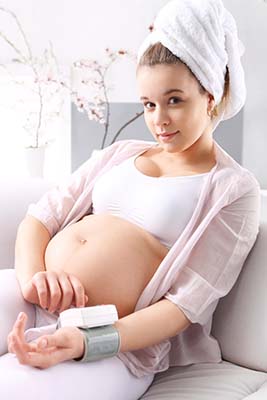
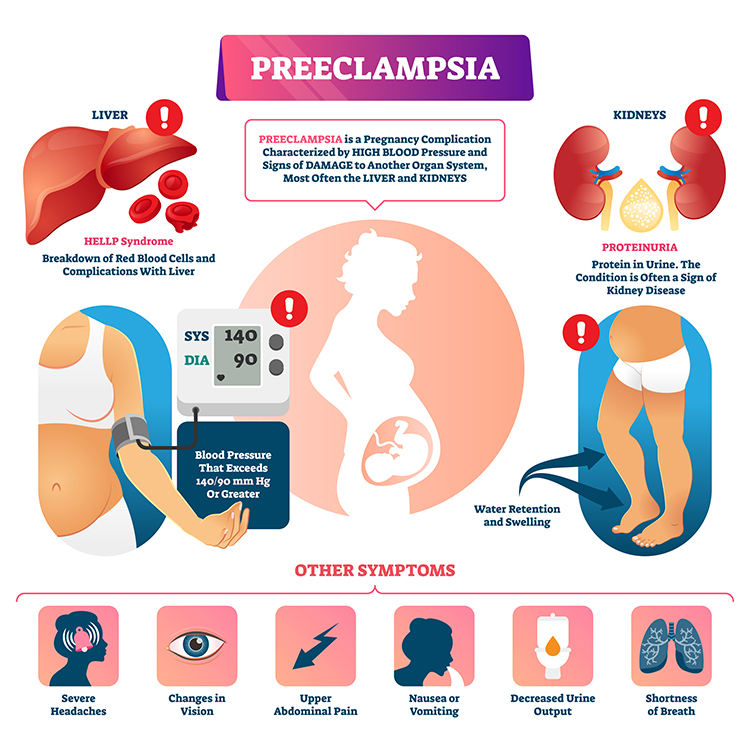
Demographics
Preeclampsia is a condition that affects an estimated 5 to 7 percent of all pregnancies worldwide and is a significant contributor to maternal health complications. Each year, it results in over 70,000 maternal and 500,000 fetal fatalities globally. Within the United States, Black women experience a 60 percent higher incidence of preeclampsia than their White counterparts. Furthermore, Black women are more prone to develop this condition and face a greater risk of associated severe consequences, including kidney damage and mortality (Dawson, 2022).
Biofeedback Studies
Three randomized controlled trials (El Kosery et al., 2005; Little et al., 1984; Somers et al., 1989) and a multi-group study with a historical control (Cullins et al., 2013) treated preeclampsia with biofeedback-assisted relaxation. The biofeedback modalities included electrodermal (galvanic skin response and skin conductance) biofeedback, heart rate variability biofeedback, or temperature biofeedback.Clinical Efficacy
Based on three RCTs, Fred Shaffer rated electrodermal and temperature BART as efficacious and specific for preeclampsia. Participants improved in hospitalization frequency and length, diastolic blood pressure (DBP), mean arterial pressure (MAP), systolic blood pressure (SBP), methyldopa dosage, and proteinuria.FUNCTIONAL ABDOMINAL PAIN
Functional gastrointestinal disorders are diverse and diagnosed by their symptoms. These include cyclic vomiting, irritable bowel syndrome (IBS), and functional abdominal pain. Graphic © Sebastian Kaulitzki/Shutterstock.com.
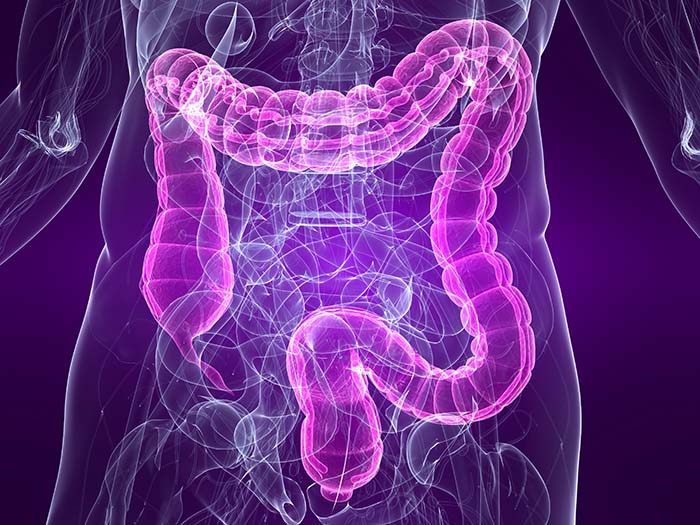
Functional abdominal pain (FAP) patients show heightened visceral pain receptor sensitivity, so normal contraction or distention of the stomach produces discomfort. They also report increased sensitivity to stressors. This should be expected since the same pathways transmit information about visceral pain and stress (McGrady & Moss, 2013). Chronic functional abdominal pain (FAP) occurs either continuously or periodically for more than 3 months. Graphic © Blaj Gabriel/Shutterstock.com.
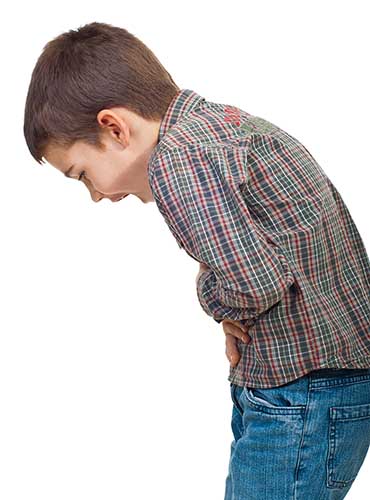
Demographics
Intermittent FAP is termed recurrent abdominal pain (RAP) and is seen in up to 10% of children and 2% of adults, primarily women. Almost all of these patients were undiagnosed following a previous assessment (Greenberger, 2013).Biofeedback Studies
Heart rate variability biofeedback (HRVB) and thermal biofeedback have been used to treat FAP. In theory, these interventions may restore autonomic balance and correct central processes that amplify visceral pain. Click on the Read More button for a brief review of FAP studies.
Humphreys and Gevirtz (2000) conducted a randomized controlled trial (RCT) of 64 children and adolescents that compared HRVB with cognitive-behavioral therapy (CBT) and family therapy. HRVB produced the best outcomes.
Sowder et al. (2010) compared HRVB with a control group. Improved symptom ratings were correlated with changes in the LF/HF ratio used to measure vagal tone.
Guiles, Stern, and Gevirtz (2014) reported complete remission in 64% of 11 pediatric patients diagnosed with recurrent abdominal pain after 10 sessions of HRV biofeedback in this uncontrolled study.
Clinical Efficacy
Richard Gevirtz (2023) rated biofeedback for FAP as level 2 - possibly efficacious in Evidence-Based Practice in Biofeedback and Neurofeedback (4th ed.). They awarded this rating due to limitations in experimental design and sample size.Irritable Bowel Syndrome
Irritable bowel syndrome (IBS) is a functional gastrointestinal disorder. IBS patients respond to stressors with alternating diarrhea and constipation, associated with abdominal pain, cramping, excessive mucus in the feces, flatulence, loss of appetite, and nausea. Graphic © Kateryna Kon/Shutterstock.com.
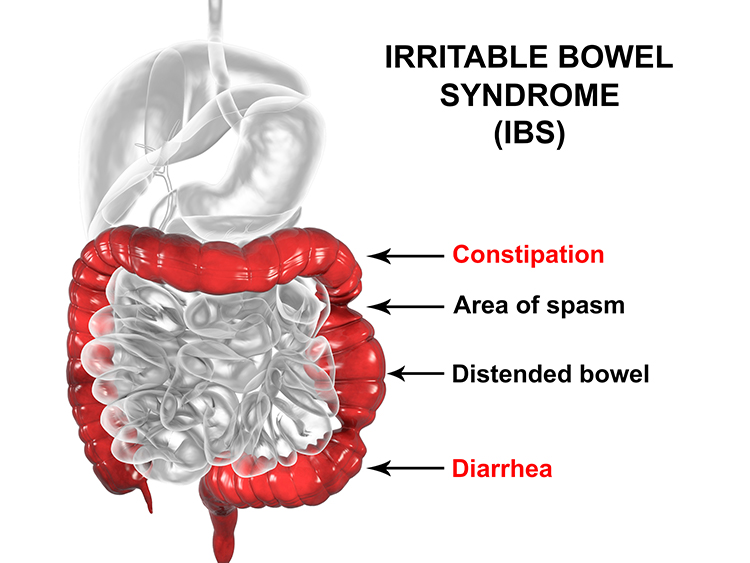
IBS signs and symptoms graphic © Irina Strelnikova/Shutterstock.com.
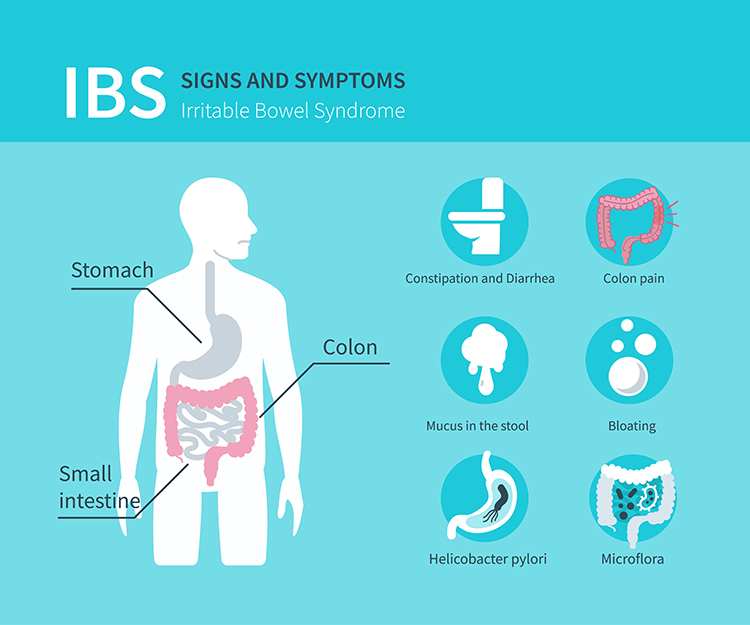
Demographics
Worldwide, approximately 10-20% of adults are impacted by IBS. It's more commonly observed in females and individuals under the age of 50 (AlButaysh et al., 2020).Biofeedback Studies
HRVB reduced IBS symptom severity in two case series (Stern, Guiles, & Gevirtz, 2014; Thomas, 2011) and two RCTs (Dobbin, Dobbin, Ross, Graham, & Ford, 2013; Thompson, 2010).Clinical Efficacy
Based on five RCTs, Donald Moss and Mark Watkins rated rectosigmoid and temperature biofeedback with Progressive Relaxation for IBS as level 4 - efficacious in Evidence-Based Practice in Biofeedback and Neurofeedback (4th ed.).Participants reduced GI and IBS symptoms and CPSR global index scores.
Diabetes Mellitus
Patients diagnosed with diabetes mellitus (DM) fail to produce or utilize insulin. DM can involve hyperglycemia (elevated blood sugar), microvascular lesions of the retina, kidneys, peripheral nerves, and cardiovascular disease disorders (Rhoades & Bell, 2013). Graphic © Alex Luengo/Shutterstock.com.
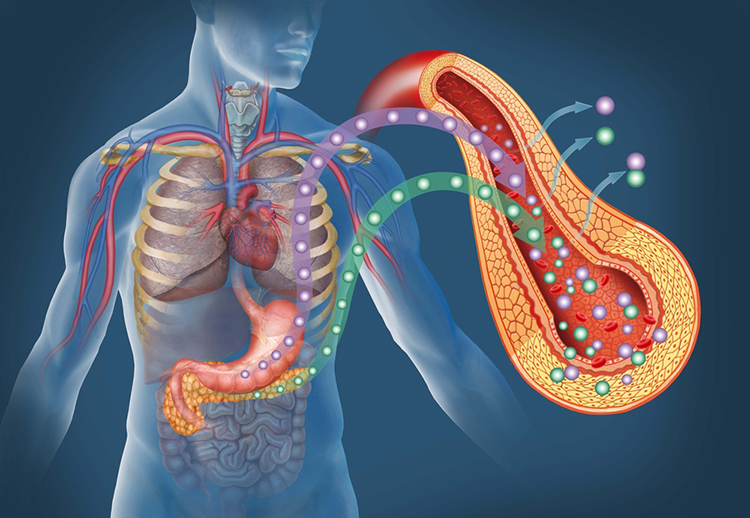
The leading diabetes treatments, preventive steps, symptoms, and risk factors are summarized below. Graphic © Inspiring/Shutterstock.com.
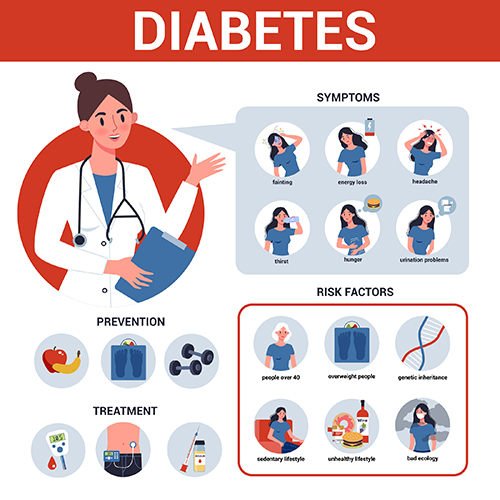
Demographics
About 30 million Americans have diabetes; 7 million of these do not know their condition. An additional 84 million adults have elevated blood sugars that increase their risk of progressing to diabetes. Under 10% of cases are Type 1 diabetes with childhood or teenage onset (Living Well with Diabetes, 2018). Diabetic foot lesions are the leading cause of hospitalization due to diabetic complications. About 15% of diabetes patients have foot ulcers, and 12-24% of these individuals require amputation. Each year, about 5% of people with diabetes are diagnosed with foot ulcers, and 1% undergo amputation (Rowe, 2014). Graphic © Tefi/Shutterstock.com.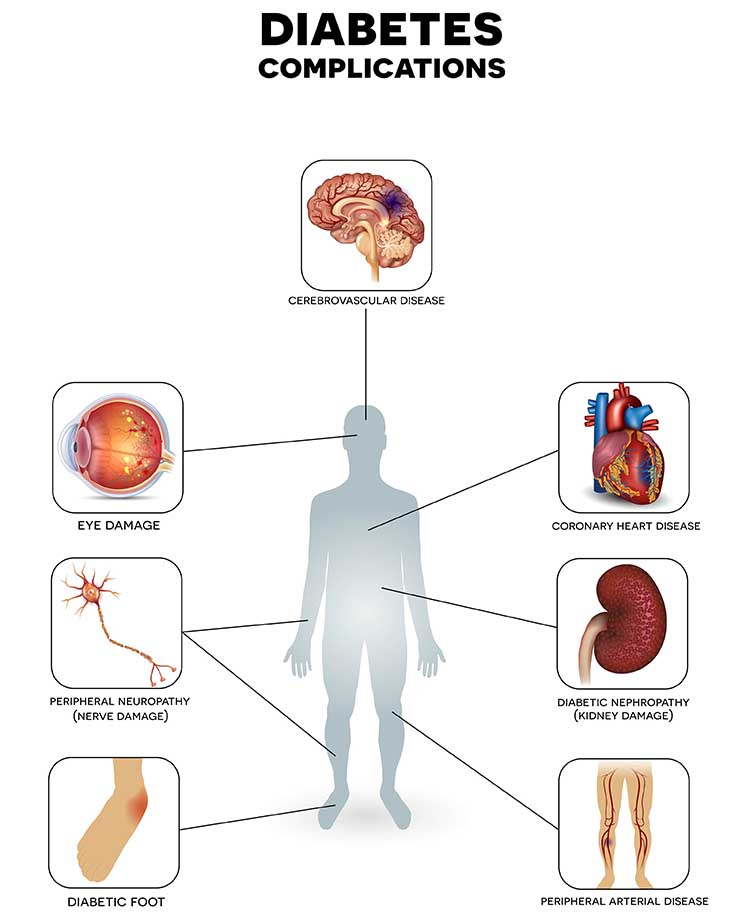
Lifestyle Management
Weight loss and exercise can delay or prevent progression from prediabetes to diabetes. The Diabetes Prevention Program trial demonstrated that losing 5-7% of weight and increasing activity by about 30 minutes reduced their diabetes risk by 58%, compared with a 31% reduction due to the oral medication metformin during the 3-year trial. A 15-year follow-up study revealed that these lifestyle changes reduced progression to diabetes by 28% compared with 18% for metformin (Living Well with Diabetes, 2018).Biofeedback Studies of Glycemic Control
Biofeedback-assisted relaxation training (BART), which combines biofeedback with relaxation procedures, has been widely used to reduce blood sugar. RCTs evaluating BART have provided EMG biofeedback, temperature biofeedback, or both modalities.Four case studies (Bailey, McGrady, & Good, 1990; Fowler, Budzynski, & VandenBergh, 1976; McGrady & Gerstenmaier, 1990; Seeburg & DeBoer, 1980), one uncontrolled study (Rosenbaum, 1983), and six RCTs (Jablon, Naliboff, Gilmore, & Rosenthal, 1997; Lane, McCaskill, Ross, Feinglos, & Surwit, 1993; McGinnis, McGrady, Cox, & Grower-Dowling, 2005; McGrady, Bailey, & Good., 1991; Miley, 1989; Surwit & Feinglos, 1983) evaluated the efficacy of biofeedback or BART to improve glycemic control. Graphic © Piotr Adamowicz/Shutterstock.com.
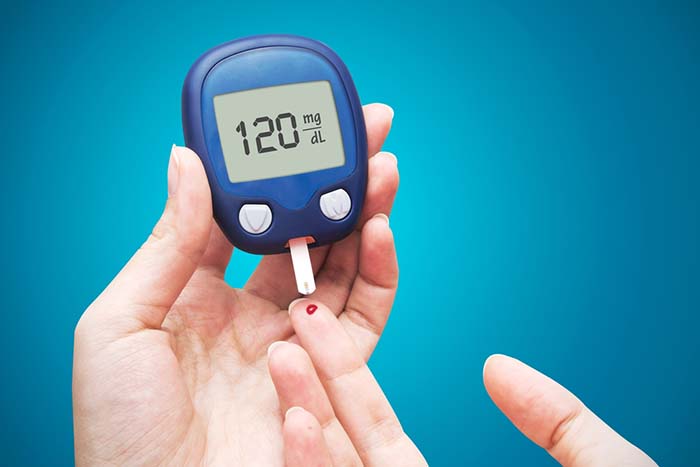
Clinical Efficacy
Based on six RCTs, Fred Shaffer rated biofeedback for glycemic control as efficacious and specific.Biofeedback Studies of Intermittent Claudication
Intermittent claudication consists of cramping leg pain triggered by exercises like walking. Two case studies (Aikens, 1991; Saunders, Cox, Teates, & Pohl, 1994) and one within-subjects study (Rice & Schindler, 1992) examined whether BART, utilizing temperature biofeedback, can reduce the frequency of intermittent claudication. Graphic © Image Point Fr/Shutterstock.com.
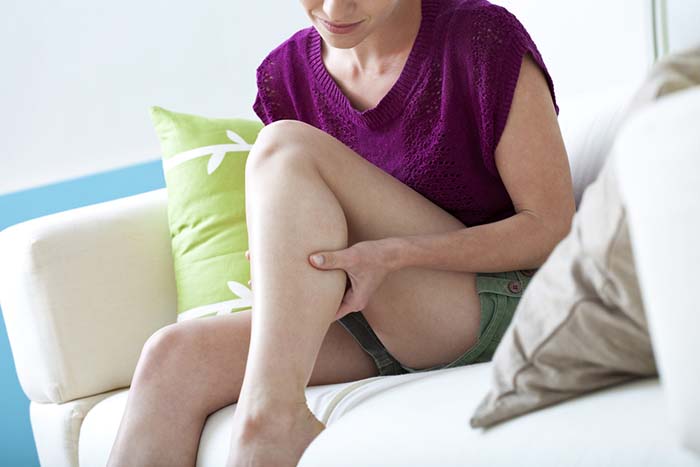
Clinical Efficacy
Fred Shaffer and Zachary Meehan (2016) rated biofeedback for intermittent claudication as level 2 - possibly efficacious in Evidence-Based Practice in Biofeedback and Neurofeedback (3rd ed.).Biofeedback Studies of Diabetic Ulcers
Patients with diabetes risk foot ulcers due to neurologic and microvascular causes. Progressive damage to peripheral sensory nerves, called peripheral neuropathy, can reduce or eliminate sensation from the foot or leg so that patients are unaware of traumatic injuries for days or weeks.
In Charcot foot deformity, loss of pressure information causes patients to place excessive stress on their feet, resulting in reduced tissue blood flow (ischemia), localized tissue death (necrosis), and microfractures in the bones of the feet (Fishman, 2004). © Alila Medical Media/Shutterstock.com.
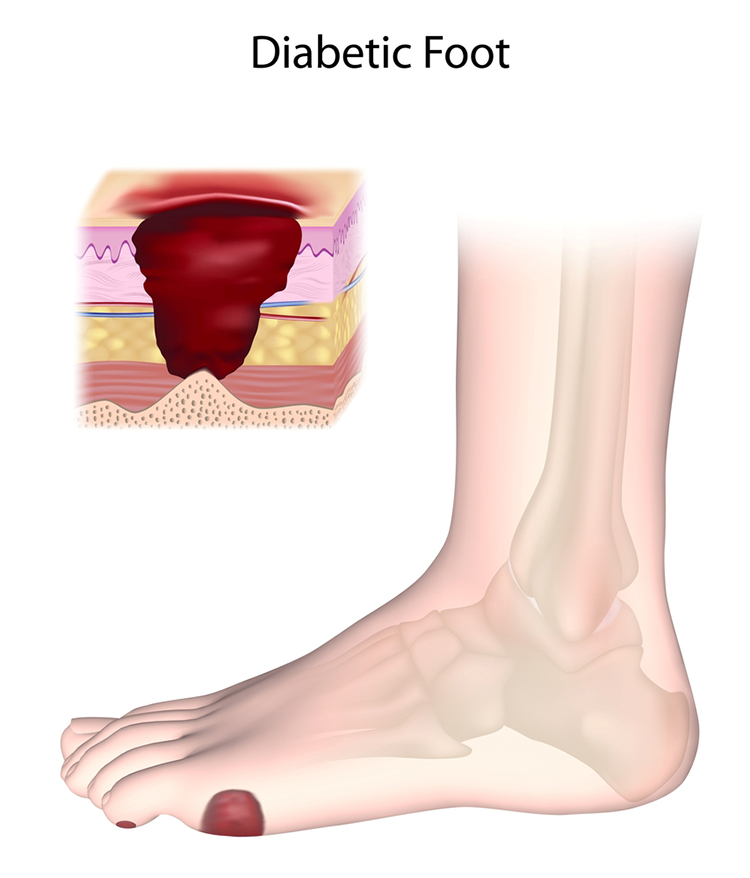
A series of case studies (Shulimson, Lawrence, & Iacono, 1986), an uncontrolled study (Fiero, Galper, Cox, Phillips, & Fryburg, 2003), and a RCT (Rice, Kalker, Schindler, & Dixon, 2001) showed that temperature BART could increase lower extremity perfusion and heal diabetic ulcers.
Clinical Efficacy
Fred Shaffer and Zachary Meehan (2016) rated biofeedback for diabetic ulcers as level 3 - probably efficacious in Evidence-Based Practice in Biofeedback and Neurofeedback (3rd ed.).Hyperhidrosis
Hyperhidrosis involves excessive sweating. While it is normal to perspire when excited or following physical exertion, these individuals constantly perspire, often without apparent triggers, from their palms and soles and less frequently from their armpits, chest, and back.
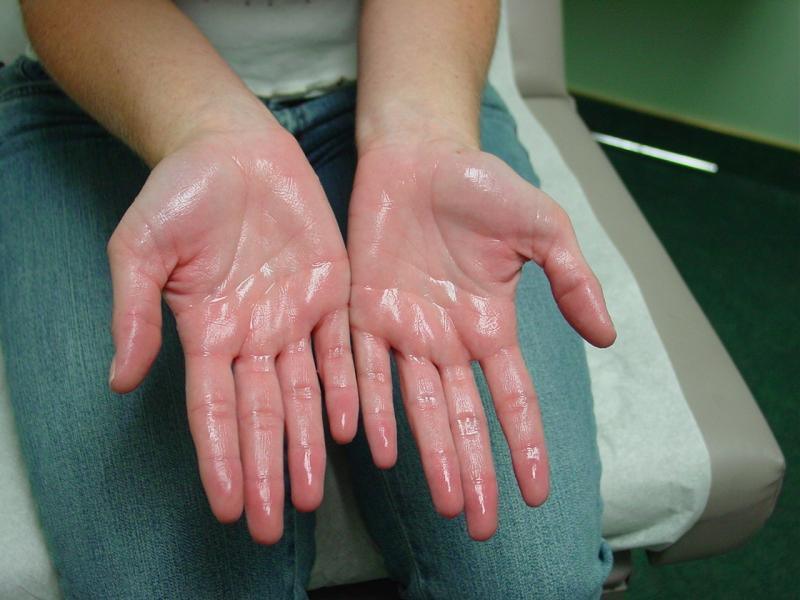
Generalized hyperhidrosis may be caused by autonomic dysregulation, or it may be due to metabolic disease, fever-inducing illness, or cancer. Graphic © Aitsana/Shutterstock.com.
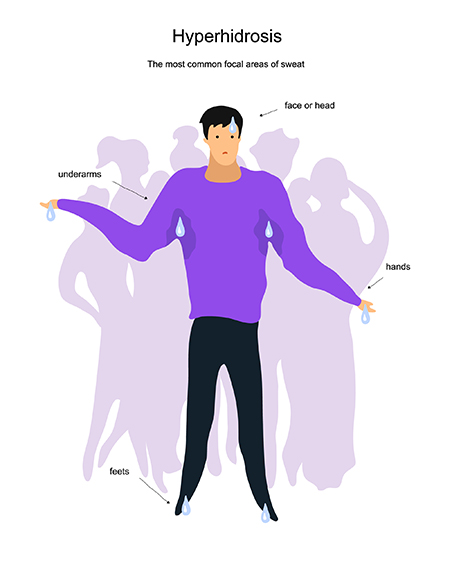
Localized hyperhidrosis may be due to abnormal regrowth of damaged sympathetic axons, an abnormal number or arrangement of eccrine sweat glands, or other vascular abnormalities. Where generalized hyperhidrosis often starts in adulthood, localized hyperhidrosis is often first seen in childhood or adolescence. Both forms of hyperhidrosis can severely embarrass these individuals and produce occupational disability (Altman, 2004).
Conventional therapies for this disorder include antiperspirants, Botox injections, lotions, oral medications, and in extreme cases, endoscopic transthoracic sympathectomy (ETS).
Demographics
Internationally, palmoplantar hyperhidrosis (excessive sweating from the hands and feet) affects the Japanese 20 times more often than other ethnic groups (Altman, 2004). The incidence of hyperhidrosis in adolescents and young adults in the United States is estimated at 0.6-1.0%. This condition affects both men and women and all age groups. Contrary to generalized hyperhidrosis, the onset of localized hyperhidrosis is often during childhood or adolescence (Schwartz, 2014).Biofeedback Studies
The rationale for using electrodermal biofeedback to treat hyperhidrosis is that sympathetic activation can increase sweating, which raises skin conductivity decreasing skin conductivity can both reduce sympathetic arousal and resultant perspiration. Also, in cases where hyperhidrosis is triggered or exacerbated by stressors, a biofeedback-assisted intervention could improve patient symptoms through better stress management. The evidence of biofeedback efficacy in hyperhidrosis is weak, based on small pretest-posttest studies without control groups.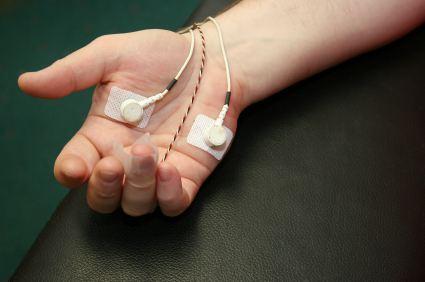
Duller and Gentry (1980) reported successful visual water vapor biofeedback treatment of 11 of 14 adults who reduced their excessive sweating 6 weeks following the treatment. The author hypothesized that the relaxation component of therapy might have been responsible for their improvement.
Singh and Singh (1993) reported that a program of electrodermal biofeedback-assisted relaxation helped 6 of 10 male patients significantly reduce their sweating. The authors found that clinical improvement was strongly correlated with reductions in skin conductivity.
Clinical Efficacy
Based on two uncontrolled and two case studies using electrodermal (GSR and SC) and WVP biofeedback for hyperhidrosis, Fred Shaffer and Branden Schaff (2023) rated biofeedback for hyperhidrosis as level 2 - possibly efficacious in Evidence-Based Practice in Biofeedback and Neurofeedback (4th ed.). This rating was due to the limited evidence fromthe weak study designs and small samples.Immune Function
The human body utilizes both nonspecific and specific immune mechanisms to protect itself against invading organisms, damaged cells, and cancer.

The primary nonspecific, or innate, mechanisms respond rapidly. They include anatomical barriers (skin and mucous membranes), phagocytosis (ingestion of microorganisms) by macrophages and neutrophils, destruction of infectious agents by natural killer cells and neutrophils, release of antimicrobial agents (hydrochloric acid, interferons, and lysozyme), signaling to other immune responders, and local inflammatory responses that confine microbes, allowing white blood cells and other immune cells to attack them. Macrophage engulfing bacteria graphic © Kateryna Kon/Shutterstock.com.
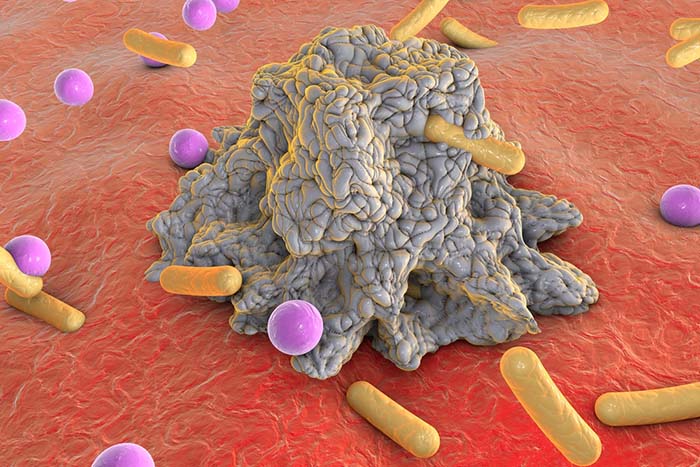
In contrast, specific or adaptive immune mechanisms are generally slower and target invaders and diseased cells selectively. The specific immune response involves the production and proliferation of antibodies by B cells, targeted destruction of foreign material by T cells, and preparation for future infiltrations of the same antigen (Shaffer & Bartochowski, 2016). Cancer cell and lymphocytes graphic © Juan Gaertner/Shutterstock.com.
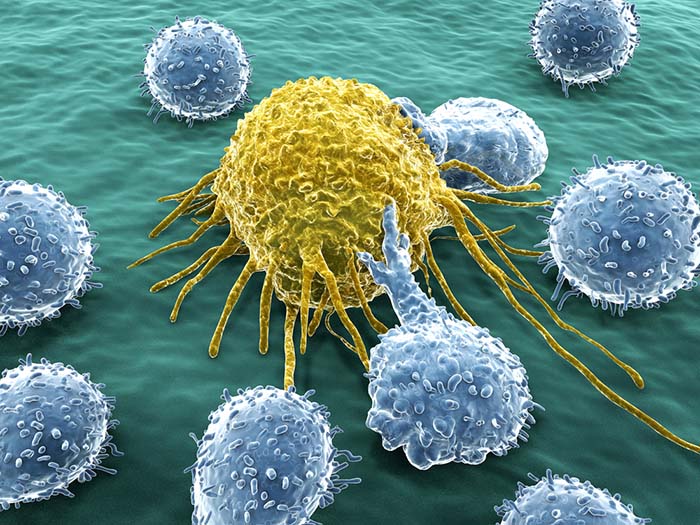
Biofeedback Studies
Click on the Read More button to review biofeedback immunity studies.
Six randomized controlled trials (RCTs) by McGrady et al. (1991), Taylor (1995), Coen, Conran, McGrady, and Nelson (1996), Birk, McGrady, MacArthur, and Khuder (2000), Kern-Buell, McGrady, Conran, and Nelson et al. (2000), and Nolan et al. (2012) examined whether interventions that included a biofeedback component (SEMG and temperature) could increase immunity.
Lehrer et al. (2010) tested whether HRV biofeedback (HRVB) training could protect subjects from the effects of an endotoxin lipopolysaccharide (LPS) injection.
Finally, Schummer, Noh, and Mendoza (2013) investigated whether neurofeedback (NF) could increase CD4+ (or helper T) cell counts. Collectively, these studies show that biofeedback and neurofeedback have promise in boosting immune function, especially in patients with compromised immunity (Shaffer & Bartochowski, 2016).
Clinical Efficacy
Based on eight RCTs, Fred Shaffer (2023) rated biofeedback for immune function as level 3 - probably efficacious in Evidence-Based Practice in Biofeedback and Neurofeedback (4th ed.).These studies did not isolate BF’s contribution to changes in immunity. Several of these experiments failed to demonstrate biofeedback training success in lowering SEMG or increasing hand temperature. In contrast, the experiments that featured HRVB (Lehrer et al., 2010) or NF (Schummer et al., 2013) demonstrated modulation of immunity.
Motion Sickness
Motion sickness is an unpleasant state, including physiologic vertigo, nausea, and malaise, in response to discrepant input between the vestibular, visual, and somatosensory systems (Rhodes & Bell, 2013). Motion sickness symptoms graphic © A-H-K/Shutterstock.com.
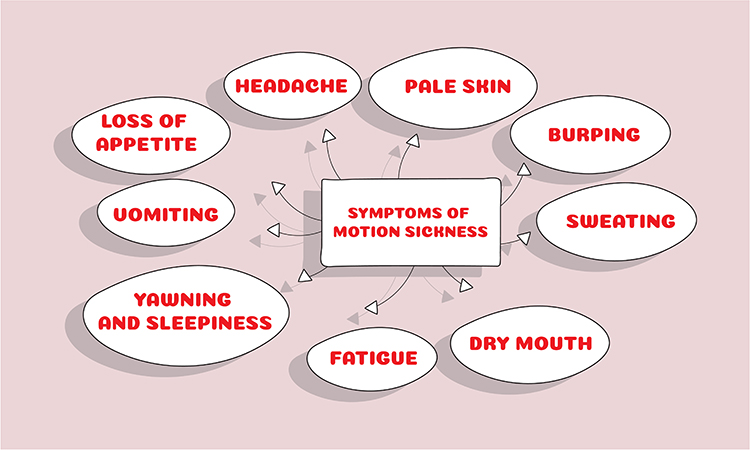
Graphic © Maridav/Shutterstock.com.
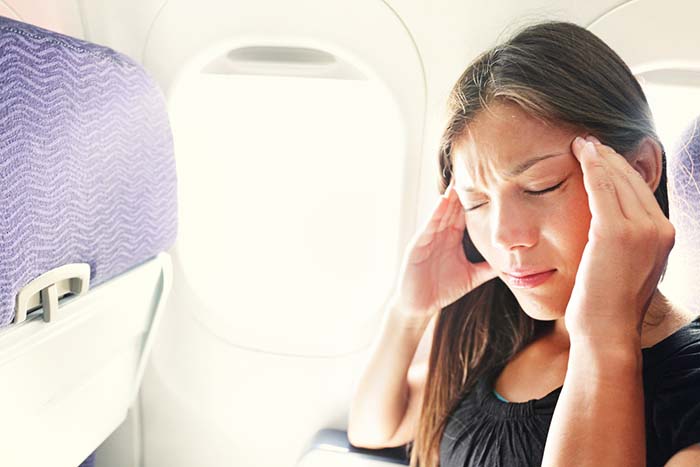
Demographics
Motion sickness will affect almost everyone with sufficiently intense motion stimuli (Brainard, 2014). Motion sickness is a severe concern for pilots and astronauts, since its symptoms can incapacitate and block airways.Biofeedback Studies
Click on the Read More button to review biofeedback motion sickness studies.
Three studies (Cowings, Suter, Toscano, Kamiya, & Naifeh, 1986; Cowings, Naifeh, & Toscano, 1990; Stout, Toscano, & Cowing, 1995) showed that angular acceleration produced by chair rotation increased sympathetic activation, while one (Graybiel & Lackner, 1980) found no relationship between physiological measures and the development of motion sickness symptoms.
Biofeedback interventions to protect aircrew against motion sickness have incorporated autogenic training, progressive relaxation, diaphragmatic breathing, and electromyographic, heart rate, skin electrical activity, and temperature biofeedback.
The effectiveness of interventions that included biofeedback and relaxation procedures in reducing motion sickness was examined in three RCTs (Dobie, May, Elder, & Kubitz, 1987; Jozsvai & Pigeau, 1996; Russell, Hoffman, Stromberg, & Carlson, 2014), an archival study (Cowings & Toscano, 2000), an uncontrolled study (Levy, Jones, & Carlson, 1981), and two case studies (Cowings, Toscano, Miller, & Reynoso, 1994). The majority of these studies showed that behavioral interventions could increase resistance to motion sickness.
Clinical Efficacy
Based on three RCTs, Shaffer and Meehan (2023) rated biofeedback for motion sickness as level 3 - probably efficacious in Evidence-Based Practice in Biofeedback and Neurofeedback (4th ed.). This rating was due to the design and sample limitations of the published studies.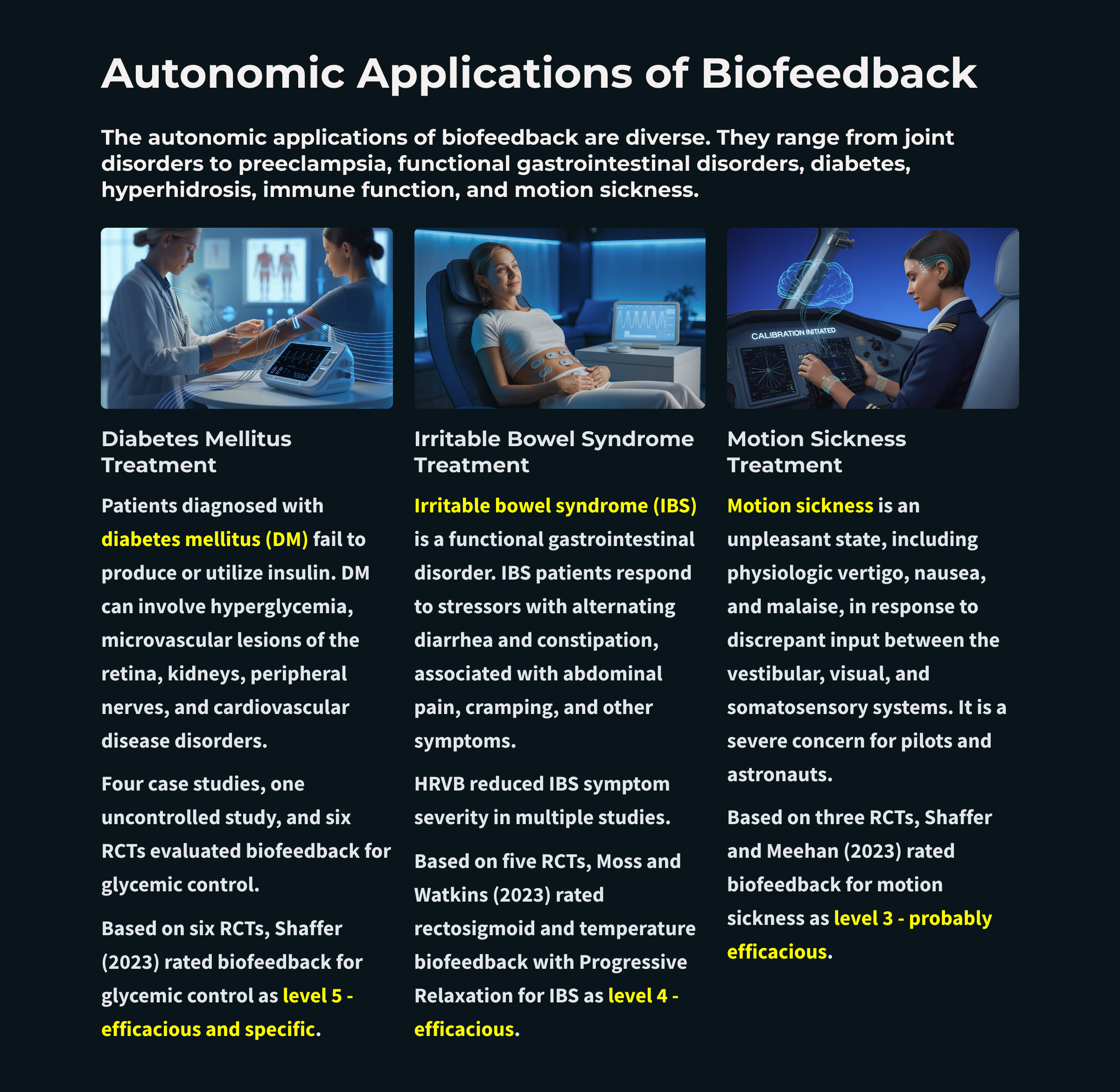
Glossary
arthritis: subtype of rheumatism in which inflammation produces painful joint swelling and stiffness.
biofeedback-assisted relaxation training: the integration of biofeedback with relaxation procedures like autogenic training and progressive relaxation.
diabetic neuropathy: diverse sensory, motor, and autonomic symptoms due to peripheral nerve damage caused by diabetes mellitus.
edema: swelling due to the abnormal accumulation of interstitial fluid produced by excessive capillary filtration or inadequate fluid reabsorption. In inflammation and allergic reactions, temperature biofeedback may help remove accumulated fluid from the edematose region by dilating peripheral arteries.
foot ulcers: lesions of the feet due to neurologic and microvascular causes. Progressive damage to peripheral sensory nerves, called peripheral neuropathy, can reduce or eliminate sensation from the foot or leg so that patients are unaware of traumatic injuries for days or weeks.
generalized hyperhidrosis: excessive sweating over the entire body surface due to autonomic dysregulation, metabolic disease, fever-inducing illness, or cancer.
hyperhidrosis: constant and excessive sweating, often without obvious triggers, from the palms and soles and less frequently from the armpits, chest, and back.
intermittent claudication: cramping leg pain triggered by exercises like walking.
irritable bowel syndrome (IBS): a syndrome in which patients respond to stressors with alternating diarrhea and constipation, associated with abdominal pain, cramping, excessive mucus in the feces, flatulence, loss of appetite, and nausea.
juvenile rheumatoid arthritis (JRA): a form of rheumatoid arthritis that appears before 16 years.
localized hyperhidrosis: excessive sweating from a specific area of the body may be due to abnormal regrowth of damaged sympathetic axons, an abnormal number or arrangement of eccrine sweat glands, or other vascular abnormalities.
motion sickness: an unpleasant state, which can include physiologic vertigo, nausea, and malaise, in response to discrepant input between the vestibular, visual, and somatosensory systems.
osteoarthritis: type of arthritis in which aging, irritation, and "wear-and-tear" progressively destroy cartilage in the synovial joints, especially those that bear weight.
palmoplantar hyperhidrosis: excessive sweating from the hands and feet.
preeclampsia: pregnancy-induced hypertension (PIH), which is characterized by the development of hypertension, proteinuria, and edema late in pregnancy.
rheumatoid arthritis: the type of arthritis in which the immune system bilaterally attacks cartilage and joint linings, resulting in a thickened synovial membrane and swollen joint.
Test Yourself
Click on the ClassMarker logo to take 10-question tests over this unit without an exam password.

REVIEW FLASHCARDS ON QUIZLET
Click on the Quizlet logo to review our chapter flashcards.

Visit the BioSource Software Website
BioSource Software offers Human Physiology, which satisfies BCIA's Human Anatomy and Physiology requirement, and Biofeedback100, which provides extensive multiple-choice testing over BCIA's Biofeedback Blueprint.

Assignment
Now that you have completed this unit, compare the evidence supporting the diverse autonomic applications. For which disorders is the evidence of efficacy strongest and weakest?
References
AlButaysh, O. F., AlQuraini, A. A., Almukhaitah, A. A., Alahmdi, Y. M., & Alharbi, F. S. (2020). Epidemiology of irritable bowel syndrome and its associated factors in Saudi undergraduate students. Saudi Journal of Gastroenterology: Official Journal of the Saudi Gastroenterology Association, 26(2), 89–93. https://doi.org/10.4103/sjg.SJG_459_19
Blanchard, E. B., Schwartz, S. P., Suls, J. M., Gerardi, M. A., Scharff, L., Greene, B., . . . Malamood, H. S. (1992). Two controlled evaluations of multicomponent psychological treatment of irritable bowel syndrome. Behavioral Research and Therapy, 30(2), 175-189.
Brainard, A. (2014). Motion sickness. eMedicine.
Chiarioni, G., & Whitehead, W. E. (2008). The role of biofeedback in the treatment of gastrointestinal disorders. Nat Clin Pract Gastronterol Hepatol, 5(7), 371-82.
Cowings, P. S., Naifeh, K. H., & Toscano, W. B. (1990). The stability of individual patterns of
autonomic responses to motion sickness stimulation. Aviation Space and Environmental
Medicine, 61(5), 399-405.
Cowings, P. S., Suter, S., Toscano, W. B., Kamiya, J., & Naifeh, K. (1986). General autonomic components of motion sickness. Psychophysiology, 23(5), 542-551.
Cowings, P. S., & Toscano, W. B. (1982). The relationship of motion sickness susceptibility to
learned autonomic control for symptom suppression. Aviation, Space, and Environmental
Medicine, 53(6), 570-575.
Cowings, P. S., Toscano, W. B., Miller, N. E., & Reynoso, S. (1994). Autogenic-feedback training
as a treatment for airsickness in high-performance military aircraft: Two cases. (NASA
Technical Memorandum No. 108810). Moffett Field, CA: National Aeronautics and Space
Administration, Ames Research Center.
Cullins, S. W., Gevirtz, R. N., Poeltler, D. M., Cousins, L. M., Edward Harpin, R., & Muench, F. (2013). An exploratory analysis of the utility of adding cardiorespiratory biofeedback in the standard care of pregnancy-induced hypertension. Applied Psychophysiology and Biofeedback, 38(3), 161-170.
Dawson, E. L. (2022). Preeclampsia, genomics and public health. CDC. https://blogs.cdc.gov/genomics/2022/10/25/preeclampsia/
Dobbin, A., Dobbin, J., Ross, S. C., Graham, C., & Ford, M. J. (2013). Randomized controlled trial of brief intervention with biofeedback and hypnotherapy in patients with refractory irritable bowel syndrome. Journal of the Royal College of Physicians of Edinburgh, 43(1), 15-23.
Dobie, T. G., May, J. G., Elder, S. T., & Kubitz, K. A. (1987). A comparison of two methods of
training resistance to visually-induced motion sickness. Aviation, Space, and Environmental
Medicine, 59(9), A34-A41.
Duller, P., & Gentry, W. D. (1980). Use of biofeedback in treating chronic hyperhidrosis: A preliminary
report. The British Journal of Dermatology, 103(2), 143.
El-Kosery, S. M. A., Abd-El Raoof, N. A., & Farouk, A. (2005). Effects of biofeedback-assisted relaxation on preeclampsia. Bull Fac Ph Th Cairo Univ, 10(2), 291-300.
El-Kosery, S. M. A., Saleh, A., & Farouk, A. (2005) Biofeedback-assisted relaxation and incidence of hypertension during pregnancy. Bull Fac Ph Th Cairo Univ, 10(1), 221-230.
Fiero, P. L., Galper, D. I., Cox, D. J., Phillips, L. H., & Fryburg, D. A. (2003). Thermal biofeedback and lower extremity blood flow in adults with diabetes: Is neuropathy a limiting factor? Applied Psychophysiology and Biofeedback, 28(3), 193-203.
Fishman, T. D. (2004). Wound care information network.
Flor, H, Haag, G, Turk, D. C., & Koehler, H. (1983). Efficacy of EMG biofeedback, pseudotherapy, and conventional medical treatment for chronic rheumatic back pain. Pain, 1(17), 21-31.
Gevirtz, R. (2013). The promise of heart rate variability biofeedback: Evidence-based applications. Biofeedback, 41(3), 110-120.
Gevirtz, R. (2023). Functional/recurrent abdominal pain. In I. Khazan, F. Shaffer, D. Moss, R. Lyle, & S. Rosenthal (Eds). Evidence-based practice in biofeedback and neurofeedback (4th ed.). Association for Applied Psychophysiology and Biofeedback.
Graybiel, A., & Lackner, J. R. (1980). Evaluation of the relationship between motion sickness symptomatology and blood pressure, heart rate, and body temperature. Aviation, Space, and Environmental Medicine, 51(3), 211-214.
Greenberger, N. J. (2013). Chronic and recurrent abdominal pain. The Merck manual.
Greenberger, N. J. (2013). Nausea and vomiting. The Merck manual.
Guiles, R. A. F., Stern, M. J., & Gevirtz, R. (2014). HRV biofeedback for pediatric irritable bowel syndrome and functional abdominal pain: Clinical replication series. Applied Psychophysiology and Biofeedback, 39(3-4), 287-291. doi:10.1007/s10484-014-9261-x
Hall, J. E. (2016). Textbook of medical physiology (13th ed.). W. B. Saunders Company.
Huether, S. E., & McCance, K. L., and Brashers, V. L. (2020). Understanding pathophysiology (7th ed.). Mosby.
Humphreys, P. A., & Gevirtz, R.N. (2000). Treatment of recurrent abdominal pain: Components analysis of four treatment protocols. Journal of Pediatric Gastroenterology & Nutrition, 31, 47-51.
Jozsvai, E. E., & Pigeau, R. A. (1996). The effect of autogenic training and biofeedback on motion
sickness tolerance. Aviation, Space, and Environmental Medicine, 67(10), 963-968.
Lamb, W. H. (2015). Pediatric Type 1 Diabetes Mellitus. eMedicine.
Lavigne, J. V., Ross, C. K., Berry, S. L., Hayford, J. R., & Pachman, L. M. (1992). Evaluation of a psychological treatment package for treating pain in juvenile rheumatoid arthritis. Arthritis Care and Research, 5(2), 101-110.
Leahy, A., Clayman, C., Mason, I., Lloyd, G., & Epstein, O. (1998). Computerised biofeedback games; A new method for teaching stress management and its use in irritable bowel syndrome. Journal of the Royal College of Physicians of London, 32(6), 552-556.
Lehrer, J. K. (2014). Irritable bowel syndrome. eMedicine.
Levy, R. A., Jones, D. R., & Carlson, E. H. (1981). Biofeedback rehabilitation of airsick aircrew. Aviation, Space, and Environmental Medicine, 52(2), 118-121.
Lim, K.-H. (2014). Preeclampsia. eMedicine.
Little, B. C., Hayworth, J., Benson, P., Hall, F., Beard, R. W., Dewhurst, J., & Priest, R. G. (1984). Treatment of hypertension in pregnancy by relaxation and biofeedback. The Lancet, 323(8382), 865-867.
Living well with diabetes. (2018). Harvard Health Publishing.
Lozada, C. J. (2014). Osteoarthritis. eMedicine.
Masters, K. S. (2006). Recurrent abdominal pain, medical intervention, and biofeedback: What happened to the biopsychosocial model? Applied Psychophysiology and Biofeedback, 31(2), 155-165.
McGrady, A., Kern-Buell, C., Bush, E., Devonshire, R., Claggett, A. L., & Grubb, B. P. (2003). Biofeedback-assisted relaxation therapy in neurocardiogenic syncope: A pilot study. Applied Psychophysiology and Biofeedback, 28(3), 183-192.
Moss, D., & Watkins, M. (2023). Irritable bowel syndrome. In I. Khazan, F. Shaffer, D. Moss, R. Lyle, & S. Rosenthal (Eds). Evidence-based practice in biofeedback and neurofeedback (4th ed.). Association for Applied Psychophysiology and Biofeedback.
Palumbo, P. J., & Melton, L. J. (1985). Diabetes in America: Diabetes data compiled in 1984. (NIH publication No, 851468). U.S. Government Printing Office.
Quan, D. (2014). Diabetic neuropathy. eMedicine.
Rhoades, R., & Bell, D. R. (Eds.) (2013). Medical physiology: Principles for clinical medicine (4th ed.). Lippincott, Williams & Wilkins.
Rice, B., Kalker, A. J., Schindler, J. V., & Dixon, R. M. (2001). Effect of biofeedback-assisted relaxation training on foot ulcer healing. Journal of the American Podiatric Medical Association, 91(3) 132-141.
Rice, B. I., & Schindler, J. V. (1992). Effect of thermal biofeedback-assisted relaxation training on blood circulation in the lower extremities of a population with diabetes. Diabetes Care, 15(7), 853-858.
Rowe, V. L. (2014). Diabetic ulcers. eMedicine.
Russell, M. E., Hoffman, B., Stromberg, S., & Carlson, C. R. (2014). Use of controlled
diaphragmatic breathing for the management of motion sickness in a virtual reality environment. Applied Psychophysiology and Biofeedback, 39(3-4), 269-277.
doi:10.1007/s10484-014-9265-6
M. S. Schwartz, & F. Andrasik (Eds.). (2003). Biofeedback: A practitioner's guide (3rd ed.). The Guilford Press.
Schwartz, R. A. (2014). Hyperhidrosis. eMedicine.
Schwartz, S. P., Taylor, A. C., Scharff, L., & Blanchard, E. B. (1990). Behaviorally treated irritable bowel syndrome patients: A four-year follow-up. Behavioral Research and Therapy, 28(4), 331-335.
Shaffer, F. (2023). Immune function. In I. Khazan, F. Shaffer, D. Moss, R. Lyle, & S. Rosenthal (Eds). Evidence-based practice in biofeedback and neurofeedback (4th ed.). Association for Applied Psychophysiology and Biofeedback.
Shaffer, F. (2023). Preeclampsia. In I. Khazan, F. Shaffer, D. Moss, R. Lyle, & S. Rosenthal (Eds). Evidence-based practice in biofeedback and neurofeedback (4th ed.). Association for Applied Psychophysiology and Biofeedback.
Shaffer, F., & Meehan, Z. M. (2016). Diabetic ulcers. In G. Tan, F. Shaffer, R. R. Lyle, & I. Teo (Eds.). Evidence-based practice in biofeedback and neurofeedback (3rd ed.). Association for Applied Psychophysiology and Biofeedback.
Shaffer, F., & Meehan, Z. M. (2016). Intermittent claudication. In G. Tan, F. Shaffer, R. R. Lyle, & I. Teo (Eds.). Evidence-based practice in biofeedback and neurofeedback (3rd ed.). Association for Applied Psychophysiology and Biofeedback.
Shaffer, F., & Meehan, Z. M. (2023). Motion sickness. In I. Khazan, F. Shaffer, D. Moss, R. Lyle, & S. Rosenthal (Eds). Evidence-based practice in biofeedback and neurofeedback (4th ed.). Association for Applied Psychophysiology and Biofeedback.
Shaffer, F., & Schaff, B. (2023). Hyperhidrosis. In I. Khazan, F. Shaffer, D. Moss, R. Lyle, & S. Rosenthal (Eds). Evidence-based practice in biofeedback and neurofeedback (4th ed.). Association for Applied Psychophysiology and Biofeedback.
Sherry, D. D. (2014). Juvenile idiopathic arthritis. eMedicine.
Singh, G., & Singh, G. (1993). Biofeedback assisted relaxation (BAR) in management of hyperhidrosis: A preliminary study. Indian Journal of Dermatology, Venereology, and Leprology, 59(4), 187-189.
Slutsker, B., Konichezky, A., & Gothelf, D. (2010). Breaking the cycle: Cognitive behavioral therapy and biofeedback training in a case of cyclic vomiting syndrome. Psychology, Health and Medicine, 15(6), 625-631.
Somers, P. J, Gevirtz, R. N., Jasin, S. E., & Chin, H. G. (1989). The efficacy of biobehavioral and compliance interventions in the adjunctive treatment of mild pregnancy-induced hypertension. Applied Psychophysiology and Biofeedback, 14(4), 309-318.
Sowder, E., Gevirtz, R., Shapiro, W., & Ebert, C. (2010). Restoration of vagal tone: A possible mechanism for functional abdominal pain. Applied Psychophysiology and Biofeedback, 35(3), 199-206.
Stern, M. J., Guiles, R. F., & Gevirtz, R. (2014). HRV biofeedback for pediatric irritable bowel syndrome and functional abdominal pain: A clinical replication series. Applied Psychophysiology and Biofeedback, 39(3-4), 287-291. doi:10.1007/s10484-014-9261-x
Stern, M. J., Guiles, R. A. F., Huntley, C., & Gevirtz, R. (2016). In G. Tan, F. Shaffer, R. R. Lyle, & I. Teo (Eds.). Evidence-based practice in biofeedback and neurofeedback (3rd ed.). Association for Applied Psychophysiology and Biofeedback.
Stout, C. S., Toscano, W. B., & Cowings, P. S. (1995). Reliability of psychophysiological responses
across multiple motion sickness stimulation tests. Journal of Vestibular Research, 5(1), 25-33.
Temprano, K. K. (2014). Rheumatoid arthritis. eMedicine.
Thomas, C. (2011). A mixed methods investigation of heart rate variability training for women with irritable bowel syndrome. Dissertation Abstracts International, 72.
Thompson, M. (2010). Heart rate variability biofeedback therapy versus cognitive therapy for irritable bowel syndrome: A study of attendance, compliance, and symptom improvement. Dissertation Abstracts International,71, 2087.
Tortora, G. J., & Derrickson, B. H. (2021). Principles of anatomy and physiology (16th ed.). John Wiley & Sons, Inc.
Walling, A. D. (2004). Management of gestational hypertension-preeclampsia. American Family Physician, 69(4), 979-980.